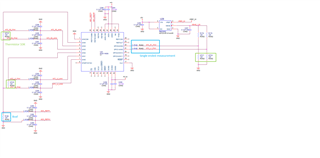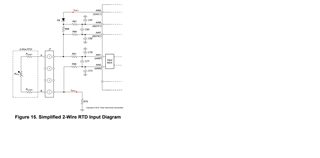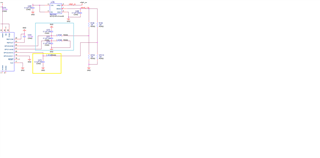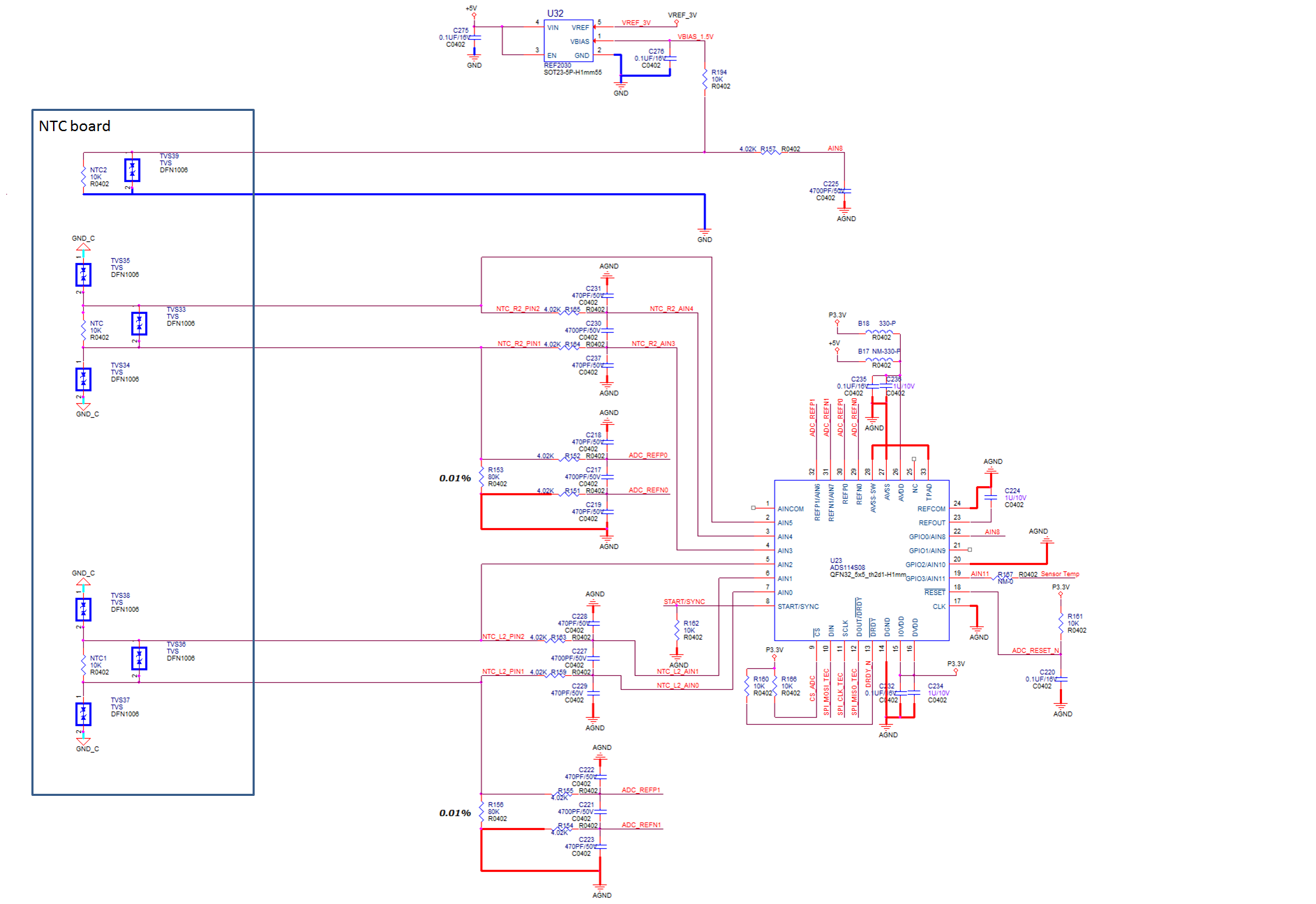Hi TI team,
Could you help to review the two schematics below? Please only focus on analog inputs because other parts are not finished yet.
The schematics include both single-ended and ratiometric measurements.
For ratiometric measurement, one uses a common reference voltage (common Rref), and the other uses independent reference voltage and bias voltage like the design shown in ADS114S08 datasheet.
Can we further simplify the schematics to reduce passive circuitry for reference or bias voltage?
Can we get any NTC voltage if we correctly set input mux, reference mux and disable PGA?
For ratiometric, the voltage reference is from REFP/REFN pins and enable PGA
For single-ended, the voltage reference is from internal 2.5V and disable PGA
Thanks.







